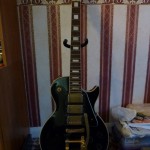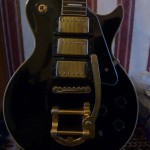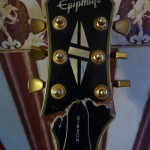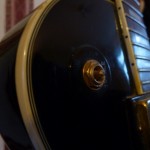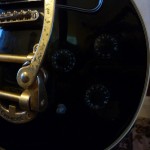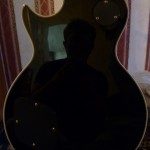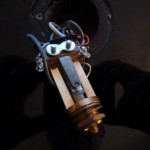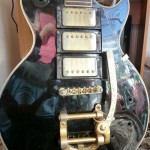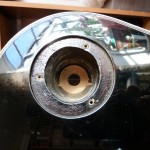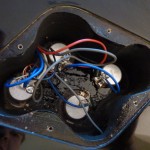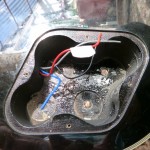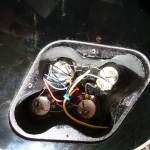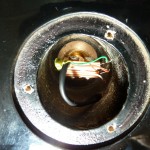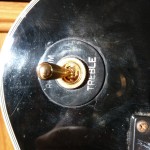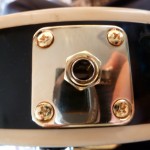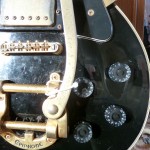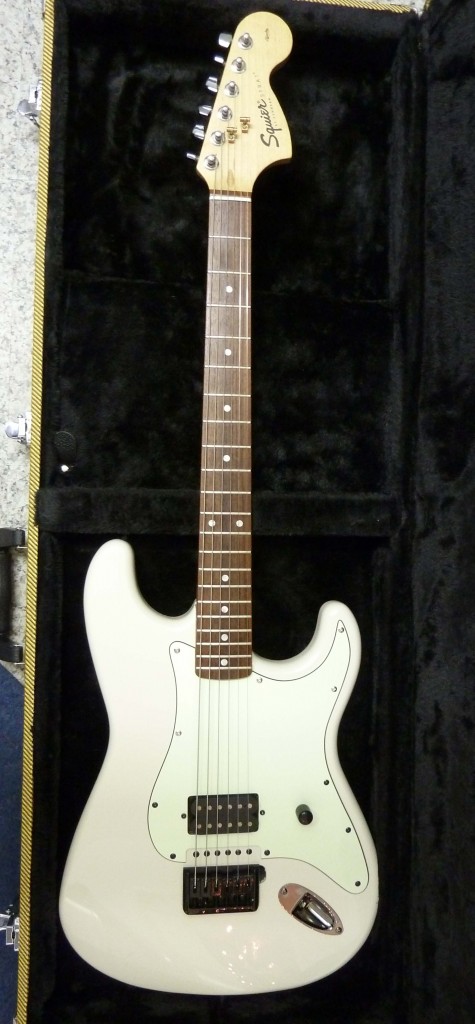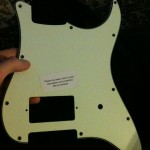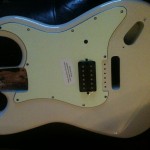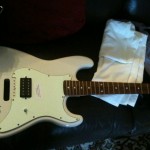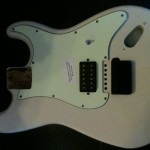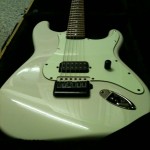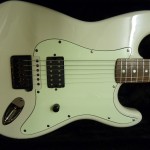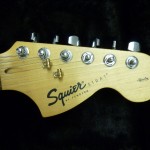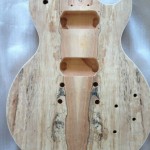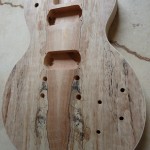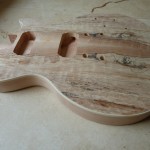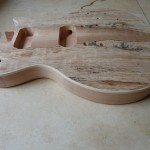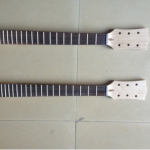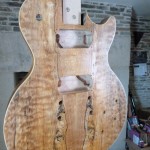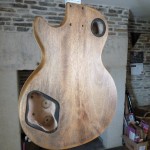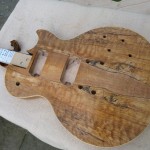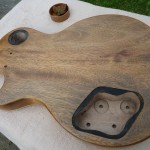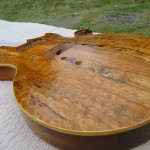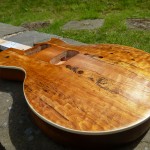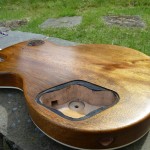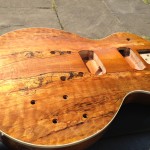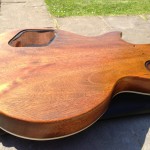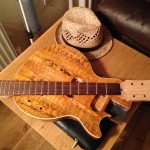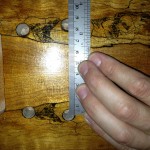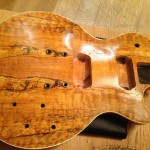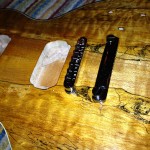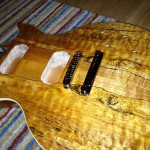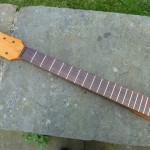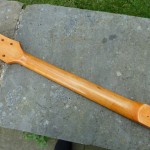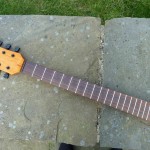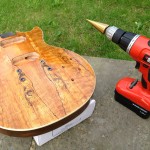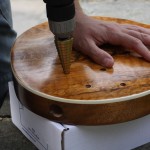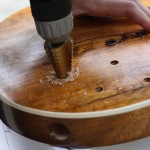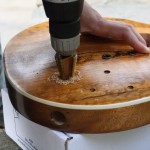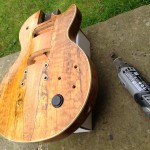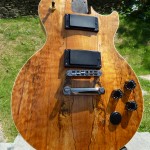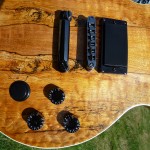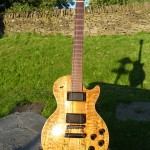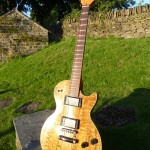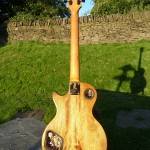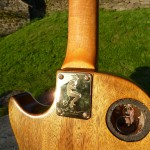Spring 2012
A good friend of mine, ex-Riverstyx frontman Joe Nightingale, had an unfortunate accident a couple of years before I took this commission on. The guitar had 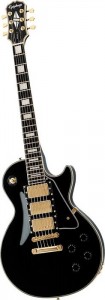 somehow slipped from its upright position against an amp, landing face-down and breaking clean through the headstock itself just under the bottom machine-heads holes. This guitar was then out of commission for a long time as my friend requested quotes from local Luthiers to re-join the head.
somehow slipped from its upright position against an amp, landing face-down and breaking clean through the headstock itself just under the bottom machine-heads holes. This guitar was then out of commission for a long time as my friend requested quotes from local Luthiers to re-join the head.
As this would require a lot of preparation around the neck joint and probably ultimately a re-spray, the quotes were understandably expensive. In the end a DIY fix was chosen and the headstock was reattached using Gorilla glue. It was at this point I was given the guitar.
I found the joint itself to be surprisingly strong. Areas where the wood grain had delaminated meant that the joint was far from flush, and in areas you could see daylight through the joint. Nevertheless, my job was to give the guitar a decent fettle and new setup with particular focus on the electrics.
Areas of concern I identified were:
- Missing tip from selector switch
- Crackly/intermittent operation of all controls (including selector switch)
- Missing speed control knob
- Broken plastic jack-plate
- Seized Bigsby lever-arm
After taking the control cover off I was greeted with some horrendous Korean wiring and components, so attempting to clean the pots was futile in my opinon. After checking with the client we decided to replace all components for new (including switch and jack).
This is a Black Beauty after all, and with an extra pickup, but the same number of controls as a standard Les Paul, this means that the wiring is slightly different to standard. In this case, the selector switch acts as normal, i.e.
- Neck only
- Neck & Bridge
- Bridge Only
The Neck Tone control in this case acts as a Master Tone for all pickups however. The tone pot that would usually be for the Bridge, then acts as a Volume control for the middle humbucker. This pickup is isolated from the selector switch altogether and can be brought into the mix or silenced using this volume pot.
Approaching the wiring took a little more thought than usual, as I had not wired up to this configuration before.
NB: For reference, GuitarElectronics.com is an invaluable site and there has only been a few occasions when I have not been able to find a solution using this website.
Work completed:
- New CTS pots (Vol1, Vol2, Vol3 & Master Tone)
- New AxesRUs Selector switch
- New jack-socket
- New jack-plate (gold)
- New black speed control knob
- Complete rewire throughout
At the point of plugging the guitar into my test amp, this was one of the “Oh Bother…” occasions where there was definitely something amiss in the wiring. This case was a loud ‘buzz’ that disappeared whenever I touched a metal component. One of the better symptoms of a problem really as it’s clearly an earthing issue. No sound at all can take much longer to fault-find and incur a much higher degree of profanity.
In this case, the earth cable coming from the bridge was at fault. Stripping back the wire further to remove the badly corroded tinning, I soldered the freshly tinned wire back onto the back of one of the volume pots. This fixed the problem, after a re-test everything was then ‘hum-free’ as all Les Pauls should be.
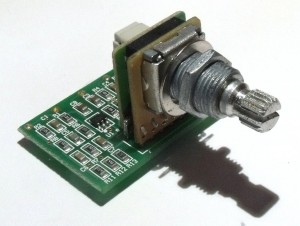 Huginn’s control configuration will differ slightly from it’s twin Muninn, as it will feature on-board effects provided by Artec’s QDD2 device.
Huginn’s control configuration will differ slightly from it’s twin Muninn, as it will feature on-board effects provided by Artec’s QDD2 device.
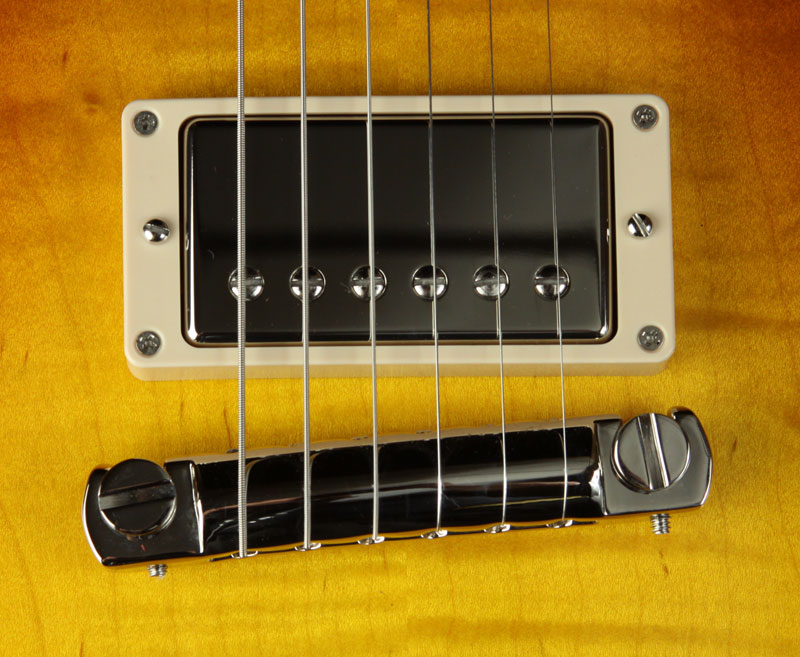 e.g. Stratocasters have pick-guards and Les Pauls have pickup rings. The mounting bolts pass through the pick-guard or ring, through an adjusting spring or silicone tube and finally screw into the pickups threaded side tabs.
e.g. Stratocasters have pick-guards and Les Pauls have pickup rings. The mounting bolts pass through the pick-guard or ring, through an adjusting spring or silicone tube and finally screw into the pickups threaded side tabs.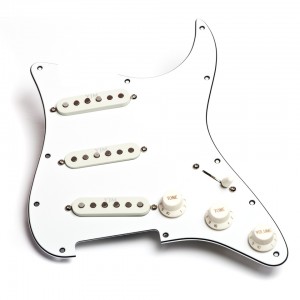 The height of the pickup is then adjusted by tightening or loosening the bolt on either side, while the spring or silicone tube applies the constant resistance required so that the pickup doesn’t flap around and moves up and down with the adjustment.
The height of the pickup is then adjusted by tightening or loosening the bolt on either side, while the spring or silicone tube applies the constant resistance required so that the pickup doesn’t flap around and moves up and down with the adjustment.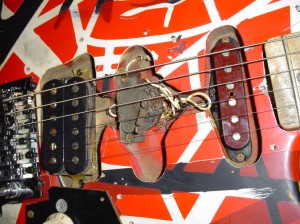
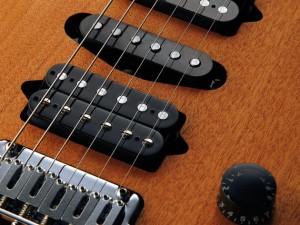
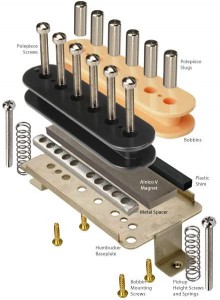
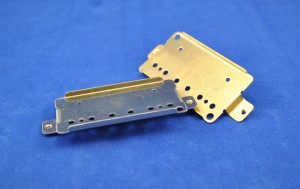 The threaded holes in the side tabs of the chosen pickup still need to be drilled out to allow the bolts to pass through freely, but this is the only modification required (with possible exception to the mounting bolts).
The threaded holes in the side tabs of the chosen pickup still need to be drilled out to allow the bolts to pass through freely, but this is the only modification required (with possible exception to the mounting bolts).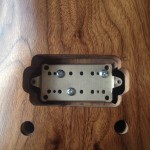
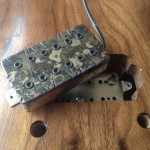

 somehow slipped from its upright position against an amp, landing face-down and breaking clean through the headstock itself just under the bottom machine-heads holes. This guitar was then out of commission for a long time as my friend requested quotes from local Luthiers to re-join the head.
somehow slipped from its upright position against an amp, landing face-down and breaking clean through the headstock itself just under the bottom machine-heads holes. This guitar was then out of commission for a long time as my friend requested quotes from local Luthiers to re-join the head.